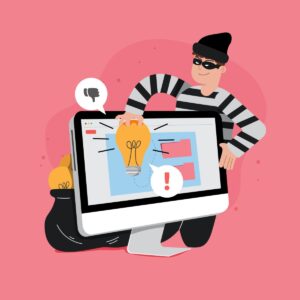Entry 1
A)Copyright awareness is the most important thing for a designer. Designers will inevitably come into contact with many resources. First, they can find inspiration, and second, they can reduce time costs. There are many kinds of resources, some are available and some are not. It depends on whether the resource is free, whether it can be used for commercial use, and whether it can be re-created. It is important for designers to understand these.According to AIGA,”It is important to decide whether the designer or the client will contract with the photographer, since the contracting party will be liable for any money owed to the photographer.” Photos are one of the most easily violated items. Whether using photos or secondary creations, many people use photos as inspiration to create. Many times this ignores the underlying copyright issues, such as the Rogers vs. Koons case and The Associated Press vs. Fairey case. The scope of my internship now is social platforms, which will be seen by many people. In case of infringement, it will be a very big blow to the company’s honor and even your own designer career, so you need to pay attention.
B)The company will sign a non-disclosure agreement with its employees, most of which are for the confidentiality of company information and data, and the copyright that cannot be disclosed for design types of work. It also depends on the contract with the designer and the company. If the contract states that the copyright of the works designed by the designer in the company belongs to the company and the client, then the designer does not have the right to use these works, even in the portfolio.My internship did not sign any non-disclosure agreement. The creations can also be sent freely, as our projects require a lot of publicity.
Citation:
AIGA Business_Ethics 47556770-Use-of-photography-1-MB.pdf
https://99designs.com/blog/tips/5-famous-copyright-infringement-cases/
https://99designs.com/blog/design-resources/copyright-infringement/
Entry 2
A)I often use a lot of resources in my essay or some presentations, and I will mark the source for credit next to it. The source of the text resources used will also be noted on the last page. This is for non-commercial use. After reading the AIGA Business Ethics Handbook, I learned that there are different aspects of copyright issues besides photos, illustrations and music etc. For example, you will often see some reactions about MVs on YouTube, but most of them will not have Japanese music/MV reactions from Japanese production companies. Because Japan’s copyright restrictions in this area are relatively strict. Of course there are also copyrights about fonts, as students we are free to use fonts for our projects as this is not for commercial use. However most fonts have commercial copyrights. This is also a part that designers can easily overlook. To become a professional designer after work, I need to pay attention to the availability of every resource I have.
B)I think Fairey’s concealment of the destruction of documents and the forgery of false documents proves that he knew he was using someone else’s copyright. He did not communicate with the original author about the copyright before using it, nor did he apologize in time when it was discovered. He steals other people’s inspiration, energy and time so his punishment was well deserved. The case also serves as a reminder to designers not to try to steal other copyrights, which could ruin their careers.
Citation:
https://www.aiga.org/sites/default/files/2021-03/Design-Business-and-Ethics.pdf
https://archive.nytimes.com/artsbeat.blogs.nytimes.com/2012/09/07/shephard-fairey-is-fined-and-sentenced-to-probation-in-hope-poster-case/



